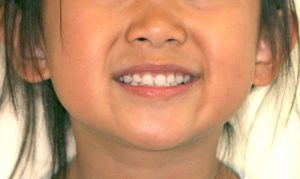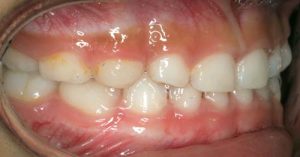The one-sided (unilateral) cross-bite in children, is a condition that should be immediately addressed or at least as early as possible. As a rule, the upper teeth should overlap the lower. When, however, the upper jaw does not develop properly, the upper arch holding the teeth will be smaller than normal. The lower teeth will not fit under the upper in the usual manner. In order to do so, the jaw, in an attempt to cause the maximum number of teeth to come together, will shift the jaw slightly to one side, causing a one-sided crossbite, in which only on one side the lower teeth are brought to overlap the upper teeth.
This condition should be addresses immediately, as the consequences are as follows:
- Results in asymmetrical growth of the lower jaw, and thus the face.
- Restricts the growth of the upper jaw.
- Increases the risk for jaw joint (TMJ) problems in the future.
- Causes insufficient space for the tongue, resulting in an increased risk for childhood sleep apnea and lisping.
- Esthetically compromised appearance.
Parents, pediatricians, ENT specialists, and general physicians should be able to spot this condition and refer to a dentist or orthodontist who has experience in functional jaw orthopedics or appliance therapy. Treatment can be initiated as early as age 5, and involves a simple removable appliance that encourages growth of the upper jawbone (maxilla).




